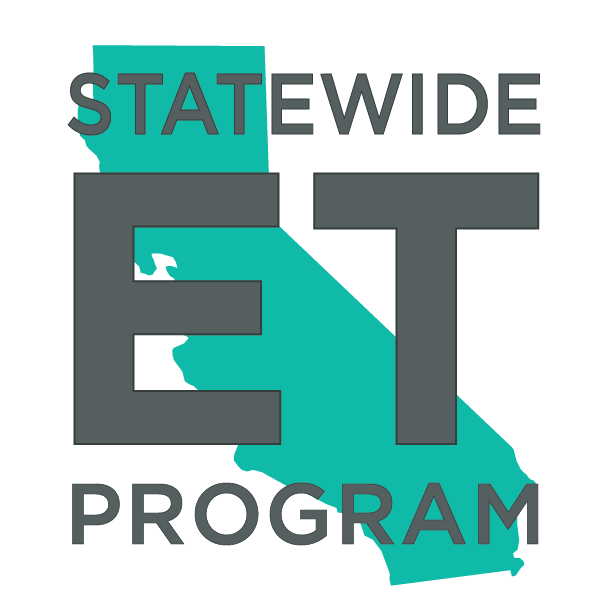ET25SWE0061 - Decarbonizing Household Appliances: Opportunities and Limitations with 120V Appliances
An innovative contractor model of partnering with homeowners and volunteers interested in saving energy has started impacting projects throughout California. Contractors partner with homeowners and community volunteers on home electrification projects, such as installing solar PV and heat pump water heaters. Homeowner/volunteers attend contractor-led trainings where they learn how electrification technologies are installed and enabled as well as the benefits of home electrification. Homeowner/volunteers can then sign up to upgrade their own homes or participate in electrification projects in their communities. This enables homeowners to be deeply involved in installations, increasing customer satisfaction and elevating the visibility of home electrification projects, while reducing contractor site visits and labor costs. Homeowners and community volunteers gain a sense of empowerment and personal investment by learning about electrification technologies and their benefits and being involved in the selection and installation of upgrades.
This focused pilot aims to test the scalability and flexibility of this business model, which is currently limited to solar and water heating, by expanding offerings to include comprehensive electrification solutions enabled by 120V plug-in appliances. These solutions would focus on 120V style appliances like HPWHs, HP washer dryer combos, and micro-HPs that are all likely to be able to be installed in many homes without significant electrical upgrades. Other potential benefits of this market offering include increased homeowner electrification awareness and readiness through engagement and education, increased contractor marketing/recruitment opportunities, and reduced labor costs through fewer callbacks.
If proven to be a viable alternative to DIY like-for-like appliance replacements, targeted community outreach in the form of training, direct homeowner/community involvement, and contractor support could be an impactful strategy for programs and businesses looking to enable home electrification. DIY like-for-like appliance replacements are a significant barrier to California efficiency and electrification goals. For example, in 2024 Opinion Dynamics found that of a representative sample of surveyed homes, 72 percent had like-for-like water heater replacements, particularly in DAC/HTR communities where panel constraints limit electrification opportunities and upgrades add time and cost to home projects for households that likely do not have an abundance of those resources to spare. Of those like-for-like replacements 55 percent were DIY installations and 46 percent of change-of-type replacements were also DIY installations. This innovative homeowner/volunteer partnership offering for contractors seeks to unlock electrification upgrades that may otherwise default to like-for-like replacements.
The focused pilot will test the scalability applicability of the homeowner/volunteer partnership model on home electrification by targeting appliances that have viable 120V alternatives. New plug-in 120V HPWHs, packaged window heat pumps, and combination washer and heat pump dryers are designed to address barriers to electrification, primarily the significant additional cost and complexity associated with household electrical panel, wiring, and service upsizing. Plug-in 120V heat pump appliance replacement has the potential to be installed by a single, non-specialized trade with minimum electrical and plumbing installation needs, making it an ideal target for testing the scalability of the homeowner/volunteer partnership model. However, additional barriers must be overcome to scale plug-in 120V appliances.
With the 2024 CalNEXT Focused Pilot Technology Priory Map (TPM) as guidance, this appliance household decarbonization focused pilot seeks to support California’s ambitious heat pump and decarbonization goals by:
• Demonstrating successful installations of low-power, plug-in, shared-circuit 120V appliances, such as heat pump water heaters (HPWHs), packaged heat pumps for space conditioning, combination washer and heat pump dryers, in disadvantaged community (DAC) and hard to reach (HTR) households.
• Demonstrating that plug-in 120V heat pump appliance replacement can be accomplished through a single, non-specialized trade with minimum electrical and plumbing installation needs
• Developing alternative, lower cost, and simplified electrification pathways for households, especially with limited electrical capacity due to panel or service constraint.
• Testing the scalability of an innovative community engagement / contractor partnering program model.
Barriers to be Addressed
• Installation complexity requires multiple contractors for 120V appliance upgrades.
• Lack of technology awareness among DACs and HTR communities.
• Unknown customer satisfaction with 120V heat pump performance.
• Replace-on-burnout, like-for-like appliance replacements are common practice, especially in resource constrained DAC/HRT communities.
Activities to be Performed
• Perform technology and market assessment – Document applicability, opportunities, and limitations of plug-in 120V appliances in panel constrained applications by collecting and summarizing existing research.
• Demonstrate successful installations of 120V appliance-enabled home electrification projects
• Develop electrification road mapping guides and tools for low-cost, low-load retrofits.
• Engage DAC/HTR communities through focused messaging and support via CBOs and select installation contractors.
• Enable single, non-specialized trade installations through homeowner support and empowerment model.
• Although not the primary focus, the pilot will seek to document applicability, opportunities, and limitations of plug-in 120V appliances in panel constraint applications.
